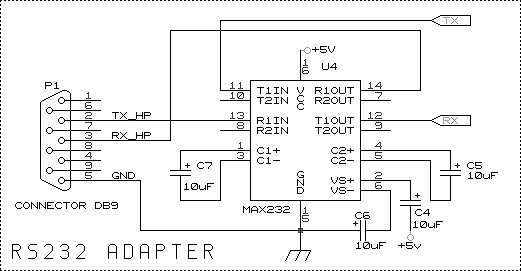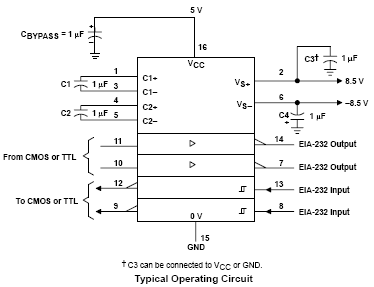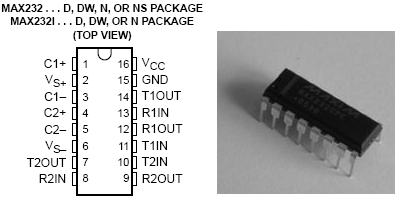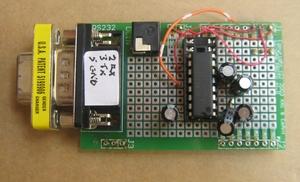HP Calculator Serial Interface - MAX232 RS-232 Chip

With MAX232 Chip
A standard serial interfacing for PC, RS232C, requires negative logic, i.e., logic ‘1’ is -3V to -12V and logic ‘0’ is +3V to +12V. To convert a TTL logic, say, TxD and RxD pins of the uC chips, thus need a converter chip. A MAX232 chip has long been using in many uC boards. It provides 2-channel RS232C port and requires external 10uF capacitors. Carefully check the polarity of capacitor when soldering the board.
The MAX232 from Maxim (maxim.com) was the first IC which in one package contains the necessary drivers (two) and receivers (also two), to adapt the RS-232 signal voltage levels to TTL logic. It became popular, because it just needs one voltage (+5V) and generates the necessary RS-232 voltage levels (approx. -10V and +10V) internally.
The MAX232 has a successor, the MAX232A (see below). The ICs are almost identical, however, the MAX232A is much more often used (and easier to get) than the original MAX232, and the MAX232A only needs external capacitors 1/10th the capacity of what the original MAX232 needs.

The MAX232 is a dual driver/receiver that includes a capacitive voltage generator to supply EIA-232 voltage levels from a single 5-V supply. Each receiver converts EIA-232 inputs to 5-V TTL/CMOS levels. These receivers have a typical threshold of 1.3 V and a typical hysteresis of 0.5 V, and can accept 30-V inputs. Each driver converts TTL/CMOS input levels into EIA-232 levels. The MAX232 chip can operate with Single 5-V Power Supply and upp to 120 kbit/s.

Show below is the interface board built by Emant Data.

An alternative simpler solution is via DS275, with needs no external capacitor and smaller.
Either circuit can be used without any problems.
This topic is related to the followings HP Calculators: HP 39gs; HP 40gs; HP 48gII; HP 50g;